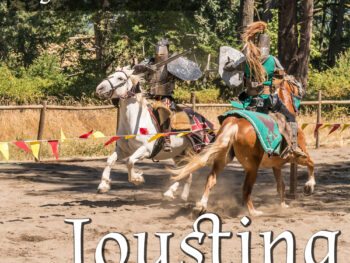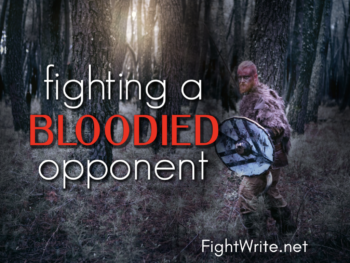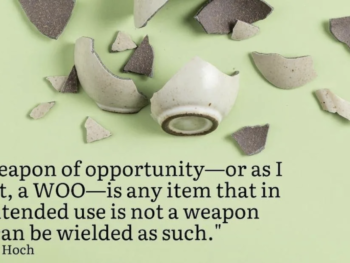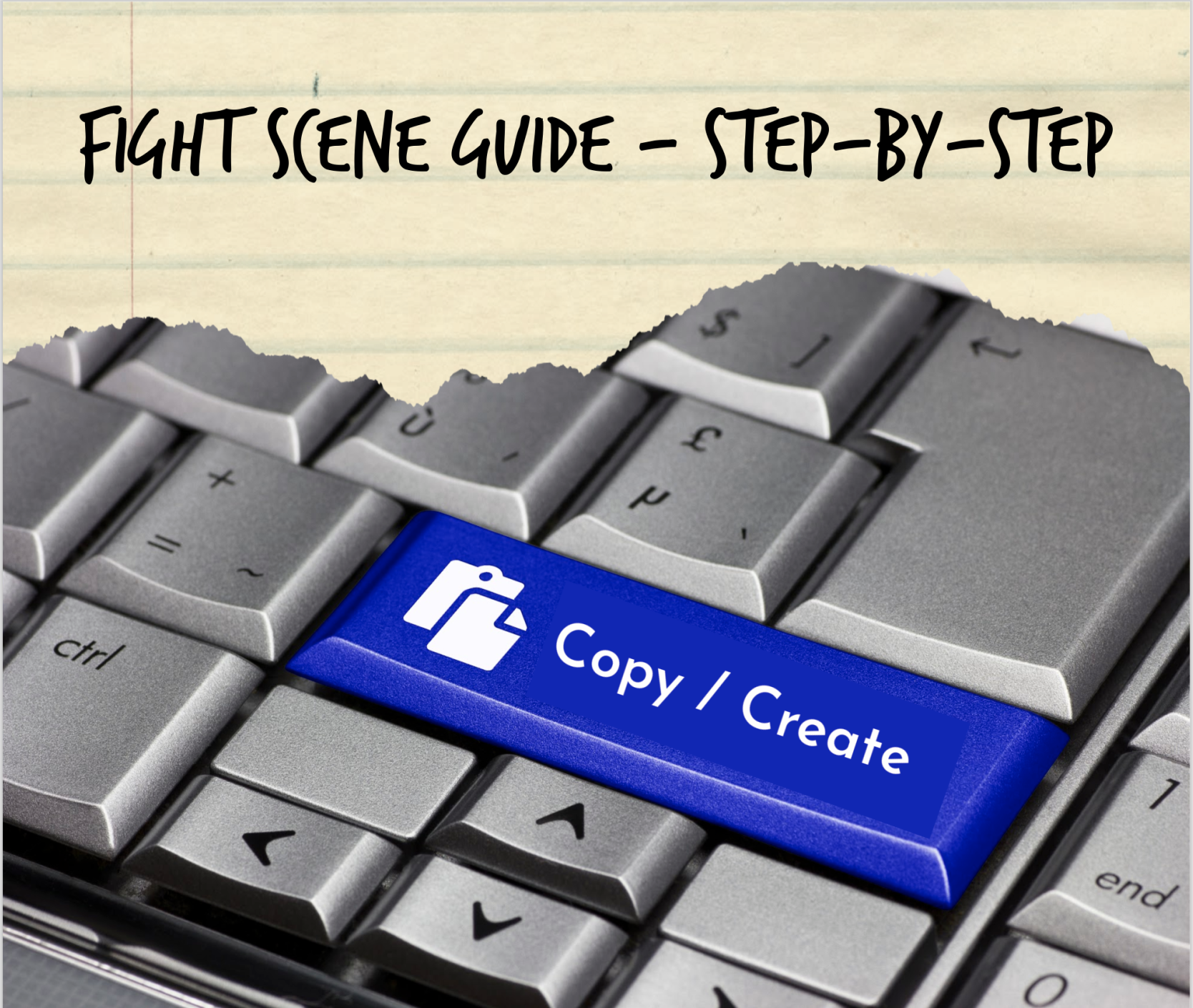Though my work with Writer’s Digest blog, I sent out an all-call for snippets of a fight scene for a fight scene critique. And, first, I want to say thank you to all those who sent in your scenes. Two hundred words is not much but I knew it would be enough. The one I chose has two common problems that are easily fixed once you know the issue. fight scene critique fight scene critique fight scene critique fight scene critique fight scene critique
Let me start by saying that having a scene edited publicly can be tough on the soul even when your name isn’t on it. I know that. I am a writer as well, don’t forget. But, in writing, like fighting and life as a whole, you can’t fix an issue until you know what it is. So, identifying a problem is a step toward success. Never forget that.
The Scene fight scene critique
For this post we will look at the scene as a whole. Then, I will point out issues and explain what the problem is. Lastly, we will consider some fixes. Sound good? Ok, here’s the short scene. The setting is Victorian fantasy with magic which will be considered. fight scene critique
“Sir, I didn’t move my feet,” Brock interrupts him. “You always say the first rule of defense is deflection. Step to the side and deflect the attack, using your opponent’s momentum against them. I forgot because I’m tired.”
“Well, um, that’s correct.” Stlad’s features soften a bit. It’s the first time Brock has ever spoken to him as a student who respects the teacher’s knowledge. “All right, add some kicks to the punches. I’ll block first. Keep your balance.” With the first kick Brock aims at Stlad, he catches it and flips Brock on his back with a twisted knee. He yelps in pain.
“I warned you to keep your balance.” Stlad shakes a finger at him. Grumbling, Brock crawls to his feet and seeks another opening. This time Stlad wraps his leg up and brings his elbow to the side of his knee. Brock begs for mercy, hopping on one foot.
“No, no, no, don’t break my leg, sir.”
“You’re slow which leaves you wide open. These big kicks are no good. You need small, fast kicks until you improve.” Stlad releases him with a shove and Brock is back on the floor, winded and angry. “Get up and block me. Watch what I do.”
First, A Thumbs Up
Ok, lots of action here which I love. Let’s jump right in with the third sentence. First, I want to point out something I like.
Sir, I didn’t move my feet,” Brock interrupts him. “You always say the first rule of defense is deflection. Step to the side and deflect the attack, using your opponent’s momentum against them. I forgot because I’m tired.”
When escape isn’t an option, the first rule of defense is to not get hit. That’s before deflection. However, deflection first may be what Stlad taught so I’m ok with that. Stlad may have his own system. If you are a boxer, the deflection that Brock does will not seem right. In striking arts, deflection, also known as parrying, is about head movement not foot movement.
However, in this case it is correct because the character Brock also uses a sword. Hand-to-hand combat where swords could be involved is different than striking you see in boxing, Muay Thai and the ilk. When swords could be in play, you use the same movements for empty hand as you do with a weapon in hand so that your brain doesn’t have to switch gears. The body simply uses the muscle memory it already has. So, yes, it makes sense that Brock is supposed to step to the side to deflect even without a weapon. Kudos to the author on that. I might would add in that the movement mimics blade in hand.
On To The Issues
Now let’s look at the first issue.
“All right, add some kicks to the punches. I’ll block first. Keep your balance.” With the first kick Brock aims at Stlad, he catches it and flips Brock on his back with a twisted knee.”
First, outside of a sanctioned fight, kicks aren’t the best idea unless you have mastery. Kicking puts you on one leg which isn’t great. And, if you make contact with the top of the foot rather than the shin or side of the shin, you can break your foot or sprain all the little muscles between the bones. Both cases can hobble you even when your body is flooded with adrenaline. Been there, done that, have the foot brace.
If your character does know how to kick tactically, they probably won’t kick high right off the bat. Yes, they can kick the head or the ribs. But the higher the kick, the easier it is to block or catch as Stlad did. A better bet is to kick the side of the knee or just above it to attack the sciatic nerve. A push kick is also a solid option. Just like its moniker suggests, a push kick pushes. Your character would plant their foot on the opponent’s midsection and push away. Not only does this create distance but can cause the opponent’s head to lower which allows your character to rush in and attack the neck and head.
Once Stlad catches the kick, he twists the knee and flips Brock on his back. That doesn’t work with body mechanics or physics. When Brock’s knee is twisted to the inside – twisting outside would attack the ankle more than knee – Brock’s body will turn with it which will put his back to Stlad. Because of that positioning, Brock wouldn’t land on his back. If the writer wants Brock on his back, they should have Stlad catch the kick, then kick Brock’s posted leg from underneath him.
Issue Number Next
Brock will again kick but will make a mortal error before he does.
Grumbling, Brock crawls to his feet and seeks another opening.
Crawling to the feet suggests that Brock is, at some point, on all fours. That is certain doom for a downed fighter. When you hit the ground during a fight, there is a belly-up way to return to standing known as a tactical get-up. It is one of the first things you learn in any combat training. If a fighter goes to all fours or a table top position, they are leaving their head open to be punted like a football. It also leaves the ribs open, provides less mobility and obscures view.
A tactical get-up can be hard to describe but the writer doesn’t have to describe it. They can simply say that Brock haggardly returns to his feet. If the writer wants to keep Brock on all fours, Stlad should punish Brock for it because it is a deadly mistake.
Issue Number Tres
Now let’s look at the next bit.
This time Stlad wraps his leg up and brings his elbow to the side of his knee.
This is also physically impossible. Let’s look at the situation. Brock has likely done a round kick. This kick has sideways momentum and the hips, knees and toes point in the direction of the momentum. His shin has likely landed around Stlad’s midsection. Stlad has “wrapped” the leg meaning he has put his arm over the top and around the leg.
Now, let’s step back and look at this. Brock’s body is positioned facing inward to Stlad. His knee is pointing inward, it’s not pointing up but even if it were, it wouldn’t matter. To elbow Brock’s knee, Stlad will have to bring his free arm across his own body and bring his elbow to the part of Brock’s knee that is facing up. Remember, the knee cap should be pointing sideways so the side of the knee is facing up. That’s not physically possible for Stlad. He would have to bring Brock’s leg across his own body and wrap it with the other arm and turn so that Brock’s down facing knee is against his stomach. Then Stlad could strike the back of the knee with a downward elbow. But, that’s kind of hard for a reader to visualize.
Issue Número Quatro
Stlad’s response to Brock regarding his kicks is this:
These big kicks are no good. You need small, fast kicks until you improve.”
In combat, kicks tend to be used sparingly because they can compromise balance, and they are tiring. The kicks that are used need to do damage. To damage, the kicks need a lot of force which will require a hard torque of the hips. This rotation allows the body weight to get behind the kick to maximize force.
Force is the product of mass times acceleration. To create torque in the hips, the body has to start in a productive, solid stance because both feet have to have friction against the ground. You can pull off two, really damaging kicks in a row. But, after two you will lose some power and will need to get back into a solid stance. So, what Stlad suggests doesn’t agree with normal combat training. However, I haven’t read up on what Stlad is teaching and there may be some magic involved that that impacts physics.
The Bigger Issue
The greater, overarching problem with any of these kicks is this. Because of the time period, while in battle, Brock may have on armor. It might be metal or leather and neither of those is kind to the kicking process, especially the former. That is why you don’t see kicks in aikido, kendo or very much in HEMA (Historical European Martial Arts) outside of foot sweeps. I can’t say they were never utilized on battlefields historically. Sweeps and push kicks absolutely were. But in armor, it ain’t easy to pull off a damaging round kick because the garb hinders hip rotation.
Gettin’ To the Fixin’
Now for the fixing. The two most common issues I see with fight scenes is too little focus on the sensory experience and defying body mechanics. I will address both of those and give options. I never, ever edit without offering better options.
For this sequence, I would focus on punches. Stlad could deflect the punches to the inside then grab Brock and throw him to the ground. When Brock does kick high enough for the kicks to be caught, Stlad should wrap the leg up and sweep Brock’s posted leg. If Brock gets up on all fours, Stlad needs to punish him for that error because it is a deadly one. A common punishment is a hard push kick to the ribs to push the fighter over hard. I’ve also had a coach kick at my head and stop just short. Yes, Stlad could just yell at him, but you forget yells faster than you do pain or nearly being kicked in the face. Trust me on this.
Hit The Sensations
I would also focus more on the sensory experience rather than the technical movement. Remember the movie the Princess Bride when Westley, as the Dread Pirate Roberts, and Inigo dueled with rapiers? In the book, Morgenstern describes the foot movement and, at the same time, how the dust kicks up under their feet. So, even though I might not have caught what the feet were doing, I could still imagine the dust pluming with movement which keeps me in the scene. Remember, not everyone can relate to a fight, but they can relate to a sensory experience.
Describe the exhaustion on Brock’s face. Show me his slumped back and dragging feet. Show me how slow his strikes are and how his body stumbles around off balance. When he hits the ground, I want to hear the air exploding from his chest. I want to see him lie there a second and hear Stlad yell at him to get up. Put me in the scene of the fight. Make me root for one of them.
Mimic the Movement
For the moves you choose to keep, orient your body in the same way. You don’t have to be able to do the move, but turn your body as the character would. Stand up and position your arm as if you have caught a kick. See if you can deliver an elbow strike with the other arm. If you have a hard time imagining how your body should be positioned, consider that your reader might as well. Limit the technical movement as much as you can.
Get Your Comic On
If you are struggling to decide which moves to toss and which to keep, think about which of the moves would be illustrated in a comic book. Comic books are invaluable resources for writers writing fight scenes. Illustrators lean on the gross movements and only illustrate small movements if they are pivotal for the scene. You know what else those artists do? They show sweat flying, grimaces on faces amidst call out bubbles that announce Pow! Bam! Bang! They bring the reader into the scene. And that’s what we writers have to do as well.
Thank you so much author for allowing me to use this scene. You put a ton of action in two hundred words and that is awesome. Readers, I’d love for this to be a regular sort of thing. If I use your scene, you get free editing of it plus a video call with me. Send it through the contact form on the site here. And, if you aren’t familiar with the Writer’s Digest Blog, give it a look.
Until the next round at FightWrite®, get blood on your pages.










I wanted to thank you for this great read!! I definitely enjoying every little bit of it I have you bookmarked to check out new stuff you post…
A powerful share, I simply given this onto a colleague who was doing a bit of analysis on this. And he in truth bought me breakfast because I found it for him.. smile. So let me reword that: Thnx for the deal with! But yeah Thnkx for spending the time to discuss this, I feel strongly about it and love reading more on this topic. If possible, as you become expertise, would you thoughts updating your blog with extra details? It is highly helpful for me. Massive thumb up for this weblog put up!
I adore looking through and I believe this website got some genuinely useful stuff on it! .
I am now not certain where you’re getting your info, however good topic. I must spend a while learning much more or understanding more. Thank you for excellent info I was in search of this information for my mission.
Thank you for the good writeup. It in fact was a amusement account it. Look advanced to far added agreeable from you! By the way, how could we communicate?
After I originally commented I clicked the -Notify me when new feedback are added- checkbox and now each time a comment is added I get 4 emails with the same comment. Is there any method you can take away me from that service? Thanks!
Hey! This is my first visit to your blog! We are a group of volunteers and starting a new initiative in a community in the same niche. Your blog provided us beneficial information to work on. You have done a extraordinary job!
Valuable info. Lucky me I found your web site by accident, and I am shocked why this accident did not happened earlier! I bookmarked it.
Of course, what a great blog and educative posts, I definitely will bookmark your website.Best Regards!
I just could not depart your website before suggesting that I actually enjoyed the standard info a person provide for your visitors? Is going to be back often in order to check up on new posts
You can certainly see your expertise in the work you write. The world hopes for more passionate writers like you who are not afraid to say how they believe. Always follow your heart. “Faith in the ability of a leader is of slight service unless it be united with faith in his justice.” by George Goethals.
I do agree with all of the ideas you’ve offered on your post. They are really convincing and will certainly work. Nonetheless, the posts are too quick for newbies. May you please extend them a bit from subsequent time? Thanks for the post.
I’ve recently started a website, the information you offer on this site has helped me tremendously. Thank you for all of your time & work. “My dear and old country, here we are once again together faced with a heavy trial.” by Charles De Gaulle.
You should take part in a contest for one of the best blogs on the web. I will recommend this site!
Hey! I know this is kinda off topic but I was wondering which blog platform are you using for this website? I’m getting tired of WordPress because I’ve had problems with hackers and I’m looking at alternatives for another platform. I would be fantastic if you could point me in the direction of a good platform.
Wonderful website. A lot of helpful information here. I’m sending it to a few buddies ans also sharing in delicious. And obviously, thanks to your sweat!
I like this web site its a master peace ! Glad I discovered this on google .
Thank you, I’ve just been searching for information about this topic for ages and yours is the greatest I’ve discovered till now. However, what about the conclusion? Are you positive about the supply?